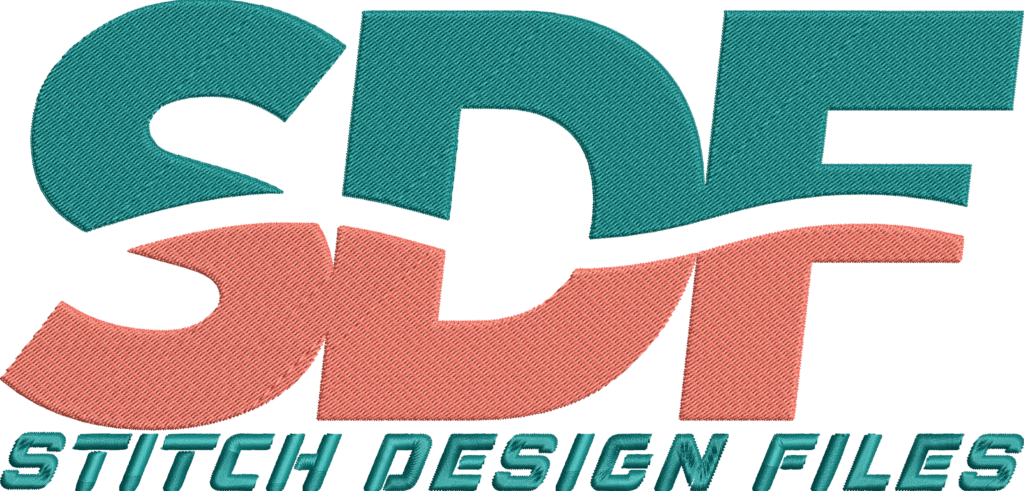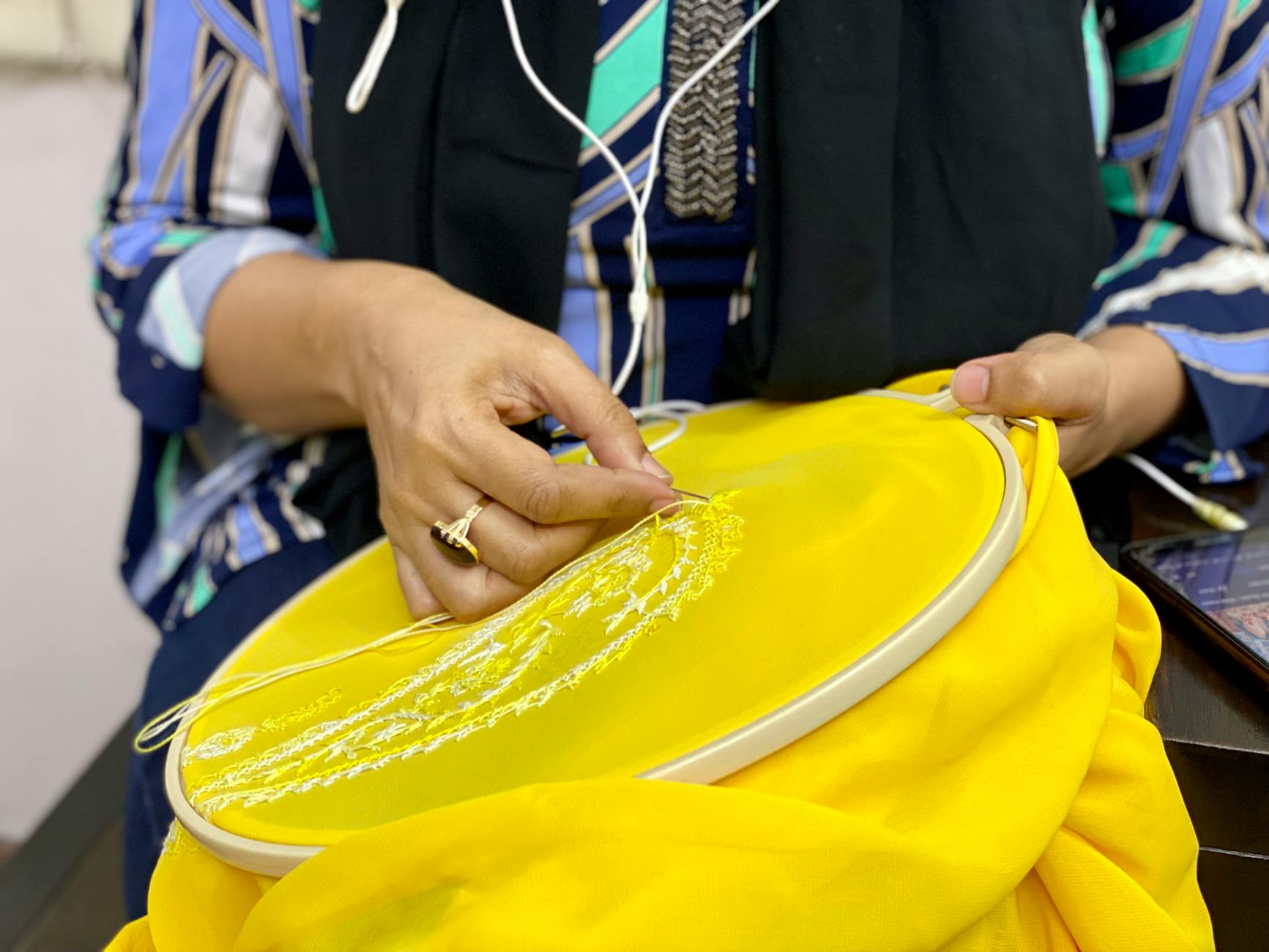No products in the cart.
Embroidery Tips & Guides
How to Create Embossed Effects with Machine Embroidery Designs
How to Create Embossed Effects with Machine Embroidery Designs
Embossed effects embroidery is a distinctive machine embroidery technique that produces a raised, textured appearance on fabric. This effect adds a sophisticated, tactile dimension to embroidered projects, making it a valuable skill for craft hobbyists, embroidery enthusiasts, and small business owners specializing in handmade embroidered products.
- Embossed embroidery uses specific fabrics, stabilizers, and stitch techniques to create a three-dimensional, raised design.
- Choosing plush fabrics such as terrycloth or fleece is essential to achieve the embossed texture.
- Careful digitizing of designs with satin stitches and strategic use of thread colors enhances the embossed effect.
- The process requires layering cutaway stabilizers and water-soluble toppings for stability and stitch definition.
- Embossed machine embroidery is ideal for monograms, bath towels, and decorative motifs, offering a professional, elegant finish.
Introduction to Embossed Effects Embroidery
Embossed effects embroidery is a machine embroidery technique designed to create the illusion of raised, three-dimensional designs on fabric surfaces. Unlike standard flat embroidery, this technique uses nap-rich fabrics such as terrycloth towels and fleece to form subtle relief patterns. This embossing method is particularly useful for hobbyists looking to add texture and uniqueness to their creations as well as for small business owners seeking to elevate the quality and appeal of embroidered products.
The embossed effect is achieved by combining fabric choice, thread color selection, stabilizers, and stitch design that manipulate the fabric’s nap or pile. This technique is utilized in monogramming, home décor, personalized gifts, and bath linens, where the dimensional texture provides an upscale look and a tactile experience. Mastery of embossed embroidery not only broadens creative possibilities but also enhances product value in the competitive handmade embroidery market.
Definitions and Explanations of Embossed Effects Embroidery
Embossed Effects Embroidery refers to a specialized machine embroidery method where the stitches depress or tamp down the fabric’s nap, creating a design that appears raised or 3D. This is accomplished primarily by using materials with a pile or nap that can be manipulated, such as terrycloth, fleece, or microfiber plush fabrics.
The effect relies on the negative space technique, where the fabric’s raised fibers are pushed down around the design area, enabling the stitched motif to stand out in subtle relief against the plush background. A combination of thread colors slightly contrasting with the fabric enhances the visual definition of the embossing.
Key components involved in embossed embroidery include:
- Fabric: Plush fabrics such as terrycloth towels, fleece, and microfiber plush are suited due to their dense, raised surfaces suitable for nap manipulation.
- Stabilizers: A medium-weight cutaway stabilizer provides foundational support beneath the fabric, while a water-soluble topping is placed on top to keep stitches on the surface and prevent them from sinking into the nap.
- Thread: Embroidery threads matching or slightly contrasting with the fabric color create subtle or pronounced embossed effects depending on the desired visibility.
- Digitizing: Embroidery files are digitized with adjusted satin stitch widths and frames to emphasize contours, producing enhanced 3D impressions.
Practical Use Cases in Machine Embroidery
Embossed embroidery is particularly well-suited for projects involving towels, bathrobes, blankets, cushion covers, and apparel made from nap-rich fabrics. The embossing technique is widely applied in monogramming and decorative embellishments on terrycloth towels for bath and spa décor, adding elegance and a spa-like luxury feel.
Small business owners specializing in personalized embroidered gifts find embossed designs invaluable for adding sophistication to their product lines. Designs such as alphabets, rose medallions, and intricate medallion-style motifs benefit greatly from embossing, which provides dimension and visual interest inaccessible with flat embroidery.
Additionally, machine embroidery hobbyists can leverage embossed effects to produce creative texture variations in craft items that stand out in handmade and artisan markets. For example, crafting embossed designs using the Ball State Cardinals Designs collection can introduce a distinctive raised texture to sports-themed gifts and apparel.
Benefits of Embossed Effects Embroidery for Crafters and Small Businesses
The embossed embroidery technique offers several advantages for enthusiasts and business creators:
- Enhanced Texture and Dimension: Adds a luxurious tactile finish that elevates basic embroidery projects.
- Increased Perceived Value: The sophisticated look enhances product appeal for consumers seeking unique and high-quality embroidered goods.
- Creative Design Opportunities: Enables use of fabric nap manipulation and stitch techniques that expand creative boundaries.
- Versatility in Fabric Selection: Compatible with various plush fabrics such as terrycloth, fleece, and microfiber that are popular in gift and décor items.
- Differentiation in Competitive Markets: Small business owners can stand out by offering exclusive embossed embroidery products.
Limitations and Challenges of Embossed Effects Embroidery
Despite its appeal, several challenges exist when creating embossed embroidery designs:
- Material Requirements: Success depends heavily on fabric choice; fabrics without nap or pile are unsuitable.
- Digitizing Complexity: Requires advanced digitizing skills to adjust stitch widths and create effective 3D contours, possibly necessitating professional embroidery software such as Perfect Embroidery Professional™.
- Stabilizer Handling: Correct layering and hooping of cutaway stabilizers with water-soluble topping demand precision to prevent puckering or distortion.
- Color Matching Skill: Subtle thread and fabric color selection is critical for achieving the desired embossed contrast and visibility.
- Cleaning Process: Post-embroidery cleanup, including trimming stabilizers and removing water-soluble topping, adds time and care to the finishing steps.
Newcomers to embossed embroidery may benefit from machines with supportive user interfaces or tutorial access, such as the Ricoma Marquee 2001. This machine accommodates detailed instructional guidance for mastering embossing techniques.
Embroidery File Formats and Digital Embroidery Tips for Embossed Designs
Embossed embroidery designs are available in multiple digital embroidery file formats, such as PES, JEF, DST, HUS, and XXX, ensuring compatibility with a wide range of embroidery machines. Digitizing embossed designs requires careful planning to balance stitch density, types of stitches (primarily satin stitches), and precise stitch placement to manipulate fabric nap effectively.
Digital embroidery tips for achieving quality embossed effects include:
- Use satin stitch widths around 3mm to define clear contours and frames that emphasize the embossed shapes.
- Employ negative space strategically in designs to allow the fabric’s nap to remain raised while the embroidered areas depress.
- Choose thread colors that contrast subtly from the fabric to enhance texture visibility without overpowering the fabric’s plush appearance.
- Utilize available embroidery software features for embossing, such as tutorials and specialized digitizing tools, to refine stitch paths and density for optimal embossing.
Accessing ready-to-use digitally embroidered embossed designs or customizable templates can expedite the creative process for both hobbyists and professionals.
Summary, Recap, and Call to Action
Embossed effects embroidery is a compelling machine embroidery technique that leverages fabric texture, precise stitch work, and thread selection to create raised, three-dimensional embroidery designs. Ideal surfaces include terrycloth towels, fleece, and microfiber plush fabrics, supported by a layered stabilizer system that maintains stitch stability and fabric integrity. Digitized designs emphasizing satin stitch frames and negative space effectively produce attractive textured motifs perfect for monograms, decorative household linens, and personalized gifts.
The benefits of embossed embroidery extend to enhanced product differentiation and increased appeal in handmade and small business embroidery niches, despite requiring careful material selection and an understanding of digitizing challenges. Integrating these techniques into embroidery collections can inspire new creative projects that capture customers’ attention with tactile, elegant designs.
Explore high-quality embroidery designs compatible with embossed effects, including collections such as Ball State Cardinals Designs, to expand the capabilities of embroidery projects and bring embossed machine embroidery ideas to life with ease and professional polish.

